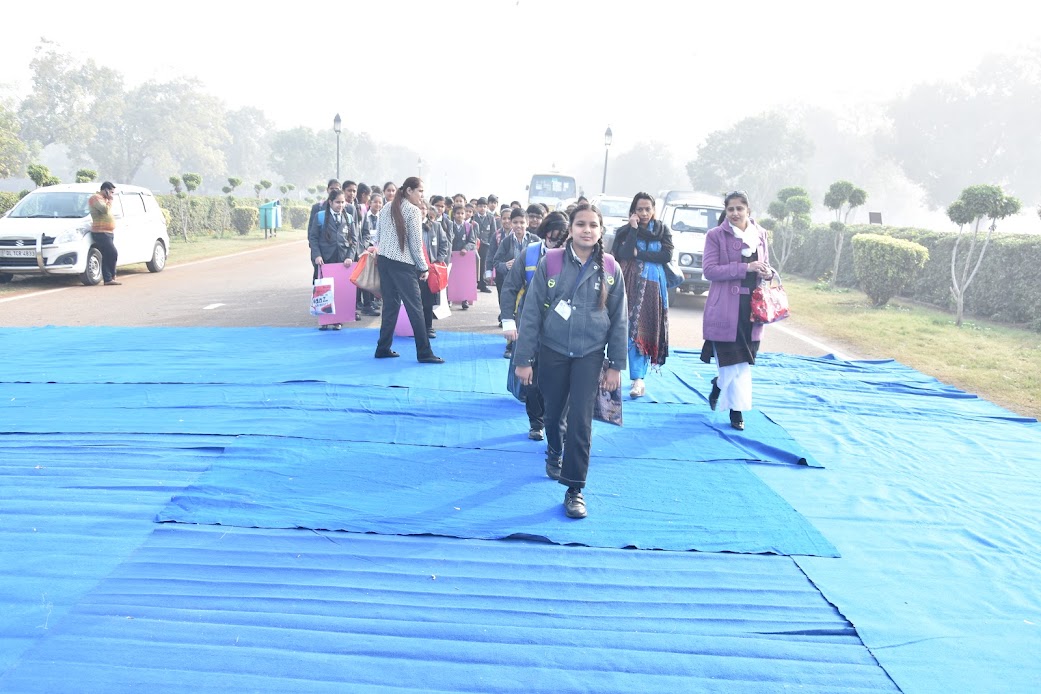Discussion On Pollution And Measures To Curb It At Abhinandan’s Center

Discussion On Pollution And Measures To Curb It At Abhinandan’s Center

On a recent evening, Abhinandan’s Center was buzzed with activity as it hosted a pivotal discussion on pollution and strategies to combat it. This event marked a significant step in the center’s ongoing commitment to environmental advocacy and community engagement. The discussion brought together environmental experts, local government officials, community leaders, and concerned citizens to address one of the most pressing issues of our time—pollution.
The youth of today can use their voices to collectively advocate against the corporations, policies, and circumstances playing a role in increasing the pollution in the environment. Keeping this in mind, we invited a bunch of school students from Vasant Valley School, New Delhi at Abhinandan’s center to hold a healthy discussion on factors contributing to the increase in outdoor pollution and the measures to curb it. Incorporating sustainable habits into our daily lives helps cut carbon emissions and preserve the ecosystem, as the student’s incredibly imaginative suggestions show.
Understanding the Scope of Pollution
The event began with an overview of the various forms of pollution affecting our environment. Air pollution, polluted water, and soil degradation were all identified as important concerns. Dr. Anil Sharma, an environmental scientist, presented data showing alarming trends in air quality deterioration and its impact on public health. Numerous studies have been conducted on the huge quantity of plastic materials & the damage it does to the environment and aquatic life.
Dr. Sharma emphasized the urgent need for collective action, stating, “Pollution is a complex issue that requires a multifaceted approach. Our actions today will determine the quality of life for future generations.”
Community Involvement and Awareness
The center’s focus on community involvement was evident throughout the discussion. Lots of regional attempts and achievements were discussed, demonstrating the power of grassroots efforts to reduce pollution. The community-led garbage segregation initiative, which has dramatically decreased the quantity of junk dumped in landfills, is one noteworthy example. It urged participants to share their personal stories and suggestions for enhancing regional environmental policies.
A key takeaway from the discussion was the importance of raising awareness and educating the public about pollution and its effects. Workshops and educational programs were proposed as effective tools for fostering environmental consciousness. The center pledged to expand its outreach efforts, including school programs and public seminars, to engage more people in the fight against pollution.
Policy and Regulatory Measures
The conversation centered on the role of laws and policies in pollution reduction. Local government officials highlighted recent legislative efforts aimed at reducing emissions, controlling industrial discharge, and promoting sustainable practices. While acknowledging that there are still implementation issues. Attendees called for stricter regulations and better implementation of existing laws.
One of the key recommendations was to enhance collaboration between government bodies, NGOs, and private sectors. This collaborative approach can lead to more effective policy-making and greater accountability. As noted by a local activist, “Government policies alone are not enough. Active participation from all sectors of society is essential for meaningful progress.”
Practical Measures and Solutions
Potential solutions for reducing pollution include several helpful technologies. These included:
- Adoption of Clean Technologies: Encouraging industries to invest in cleaner technologies and energy sources to reduce emissions.
- Waste Management Programs: Implementing comprehensive waste management systems, including recycling and composting initiatives.
- Public Transportation: Promoting the use of public transportation and non-motorized modes of travel to decrease vehicle emissions.
- Tree Planting Initiatives: Supporting local tree planting campaigns to enhance air quality and provide green spaces.
The discussion concluded with a call to action, urging participants to take personal responsibility and advocate for environmental sustainability. The goals of Abhinandan’s Center are to plan events for the future, monitor pollution, and support initiatives that advance sustainability.
Conclusion
The discussion at Abhinandan’s Center highlighted the need for collective action to tackle pollution and environmental challenges. The center is combating pollution by driving community engagement, advocating for better policies, and promoting practical solutions. A more clean safer atmosphere was the focus of many’s efforts after the event.
Awesome https://is.gd/N1ikS2